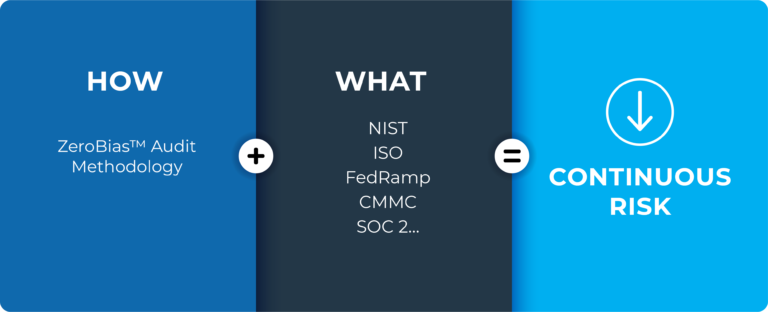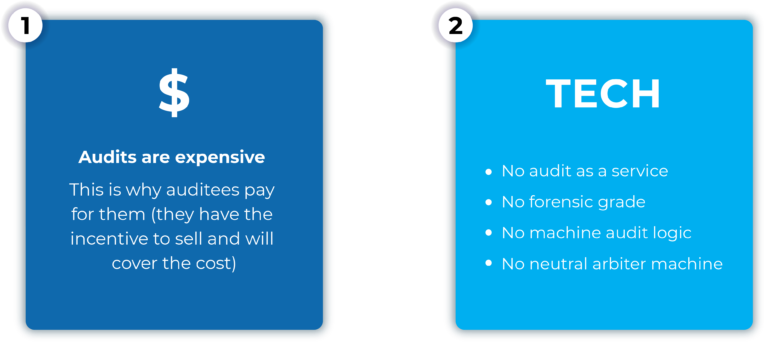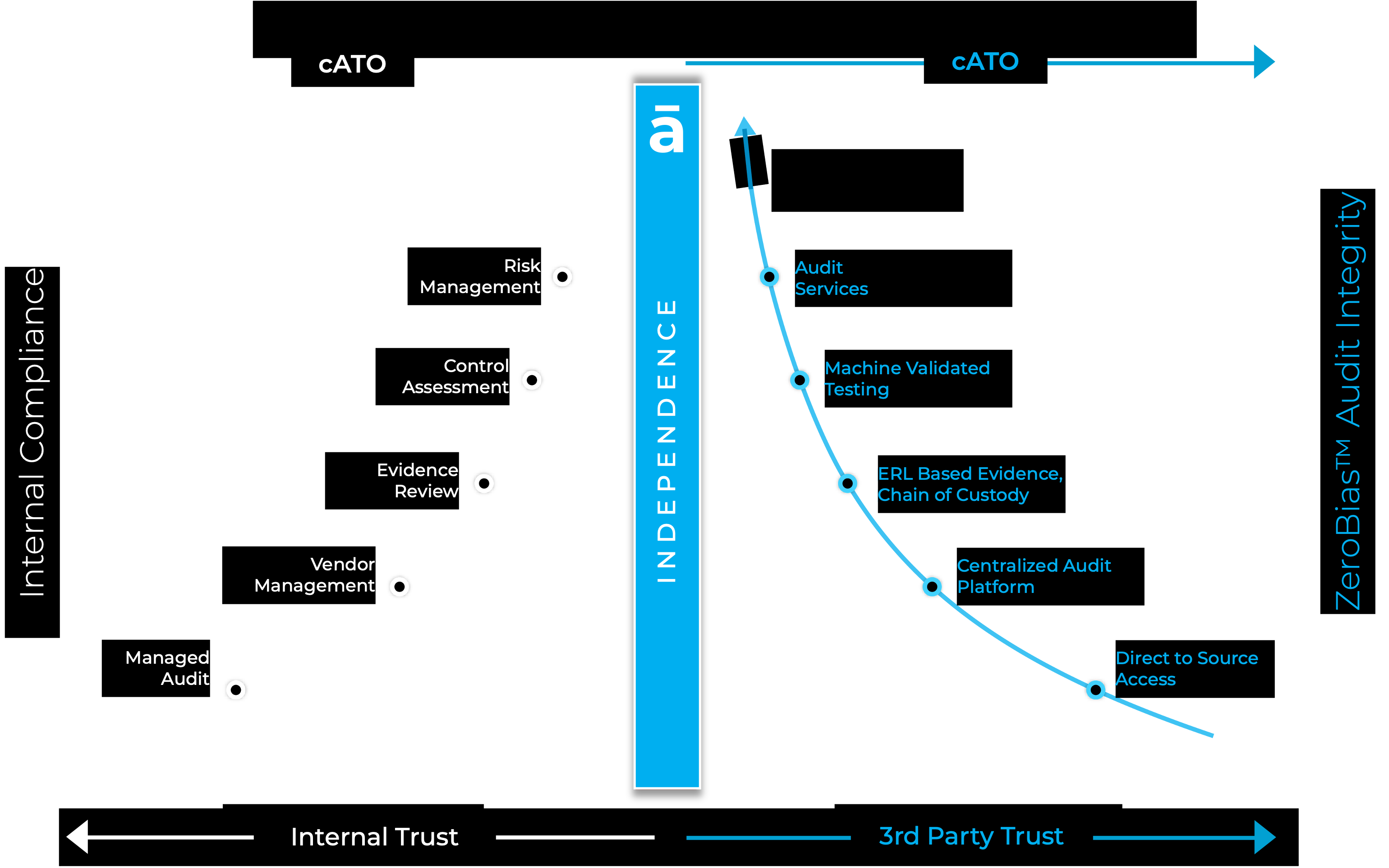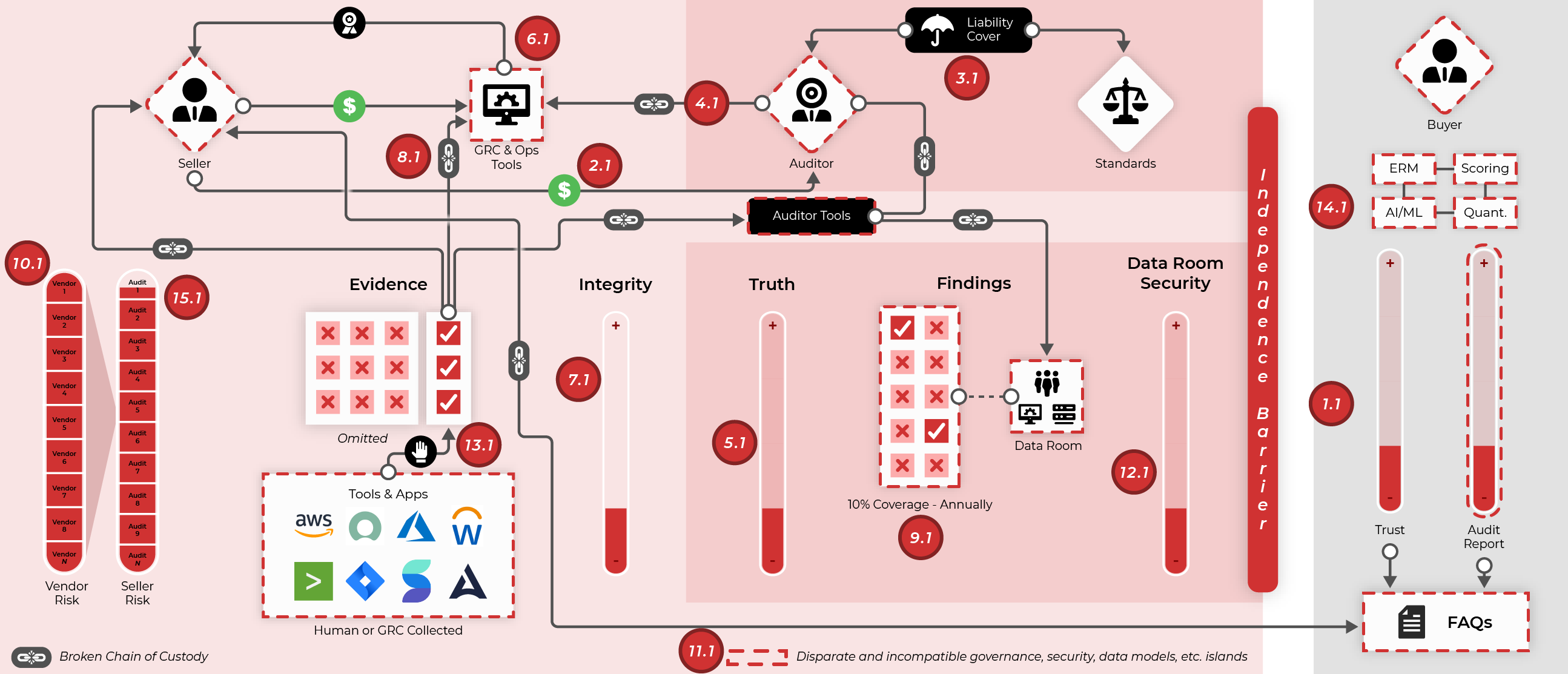A Shift From Trust Everything To The
Specifies how to audit in order to increase trust and drive out risk. It specifically outlines how an audit and associated audit data should be managed, and how all parties participate. The current version is defined by control families and key supporting elements that, when followed, ensure ZeroBias™ audits across every audit stream. As a collaborative approach, ZeroBias™ Audit Methodology controls are currently being defined and developed with the help of industry experts and stakeholders.


Today’s IT audit paradigm is like the wild west. There are multiple parties with various governance, security methods, and few shared or centralized systems. Layer in the conflicted "truth" resulting from the payment flows between audit stakeholders that only incentivize auditors to look the other way, making it difficult to achieve a trusted risk assessment.
While originally intended to identify and mitigate risk (findings), the reality is today's trust everything methods hide them. The end result is the risk pool and audit stakeholder parties have had no choice but to trust everything.
In an audit scenario of both paradigms against the ZeroBias™ IT Audit Methodology, it’s evident why a tectonic shift is required.


VS.




Headquartered in Austin, TX, Auditmation is the 3rd party IT audit and risk automation data platform enabling auditors, advisory and risk tools to strengthen audit integrity and independence in a neutral, mechanized data room.Automated evidence and testing creates higher value, tech-enabled audit and risk assurance services for our partners, that reduces the audit burden and drives cyber risk out of their client organizations and vendors, through ZeroBias™ audit data quality.
The Auditmation™ platform is available exclusively through our audit, advisory, and technology partner network.
View our Privacy Policy or Transparency of Coverage
(888) 988-8647
sales@auditmation.io
zerotrust@auditmation.io (Working group)
Auditmation
12400 Highway 71 West
Suite 350-407
Austin, TX 78738
| Cookie | Duration | Description |
|---|---|---|
| cookielawinfo-checkbox-analytics | 11 months | This cookie is set by GDPR Cookie Consent plugin. The cookie is used to store the user consent for the cookies in the category "Analytics". |
| cookielawinfo-checkbox-functional | 11 months | The cookie is set by GDPR cookie consent to record the user consent for the cookies in the category "Functional". |
| cookielawinfo-checkbox-necessary | 11 months | This cookie is set by GDPR Cookie Consent plugin. The cookies is used to store the user consent for the cookies in the category "Necessary". |
| cookielawinfo-checkbox-others | 11 months | This cookie is set by GDPR Cookie Consent plugin. The cookie is used to store the user consent for the cookies in the category "Other. |
| cookielawinfo-checkbox-performance | 11 months | This cookie is set by GDPR Cookie Consent plugin. The cookie is used to store the user consent for the cookies in the category "Performance". |
| viewed_cookie_policy | 11 months | The cookie is set by the GDPR Cookie Consent plugin and is used to store whether or not user has consented to the use of cookies. It does not store any personal data. |
